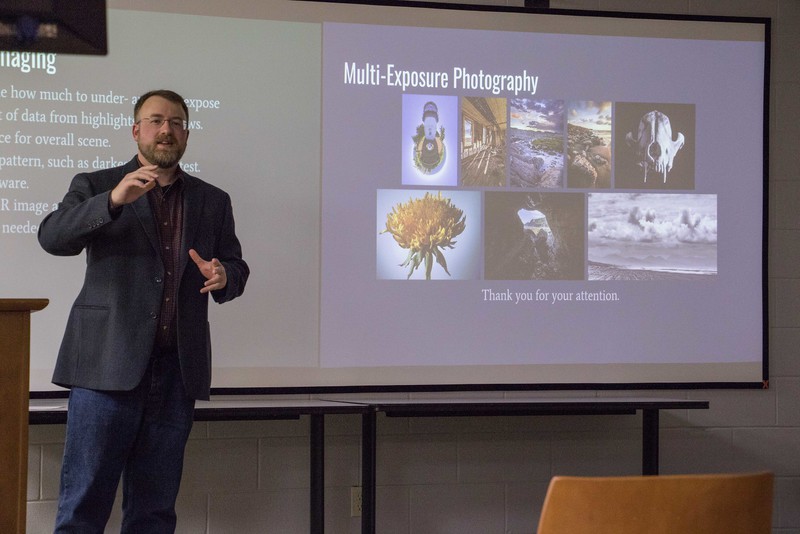Graves Lecture focuses on photography

CHADRON – The second installment of the Spring 2017 Graves Lecture Series in the King Library on Tuesday, featured Daniel Binkard, a digital graphic designer at Chadron State College.
Binkard described several multi-exposure techniques photographers can use to capture more details I their photos.
“We are working with the physics of capturing light. It all boils down to seeing more in the finished photograph,” Binkard said.
He shared samples of his own work to demonstrate how panorama stitching, focus stacking and high dynamic range imaging (HDR) can be used to record a larger range of data, making more detailed images possible.
A panorama, is created by taking multiple, overlapping exposures of the same scene, ideally using a tripod to improve alignment between exposures, Binkard said. Post production software is then used to stitch together the images into one seamless image.
The focus stacking approach consists of taking numerous photographs with only thin slices of a still life object in focus by using a shallow depth of field. By merging the exposures with software, the final image of the entire object appears in great detail.
The final technique he explained HDR imaging, that captures a high contrast scene such as the interior of a building looking onto a sunny field.
HDR involves taking a series of photos with identical film speed and lens opening, changing only the shutter speed for each exposure. Software is later used to combine the series of photos together, creating a final image containing the details of the dark interior and the bright exterior.
This effect can also be achieved by manually creating a mask in Photoshop, Binkard said.
“The masking technique is time consuming, but powerful, and the results can be natural looking,” Binkard said.
Binkard’s photography can be seen in the King Library Room 111 until the end of this semester and also in the art faculty show in Memorial Hall’s Main Gallery through March 24. A reception takes place in Memorial Hall Thursday, March 23, from 3:30 to 5 p.m.
Category: Campus News, Graves Lecture Series
